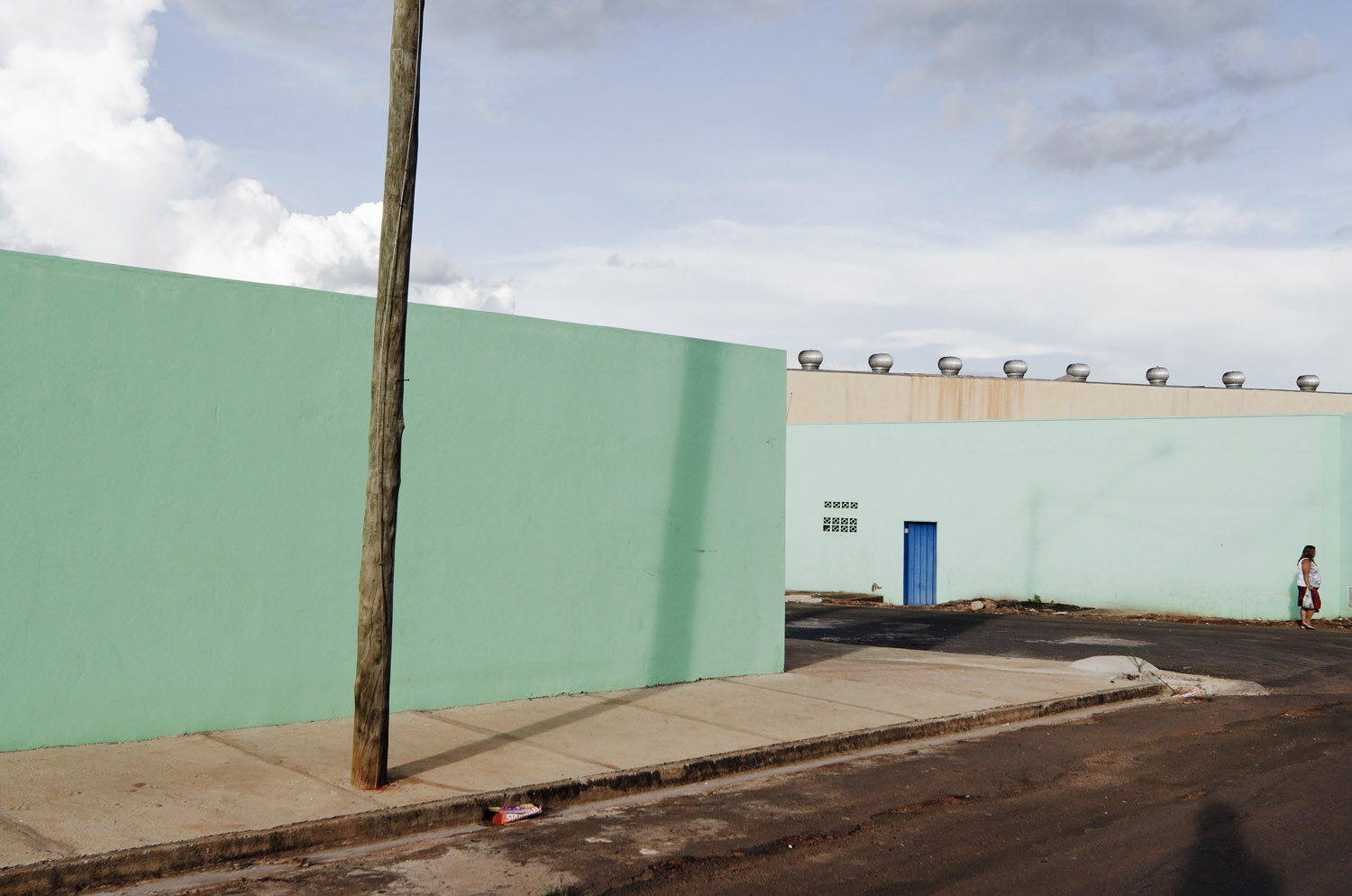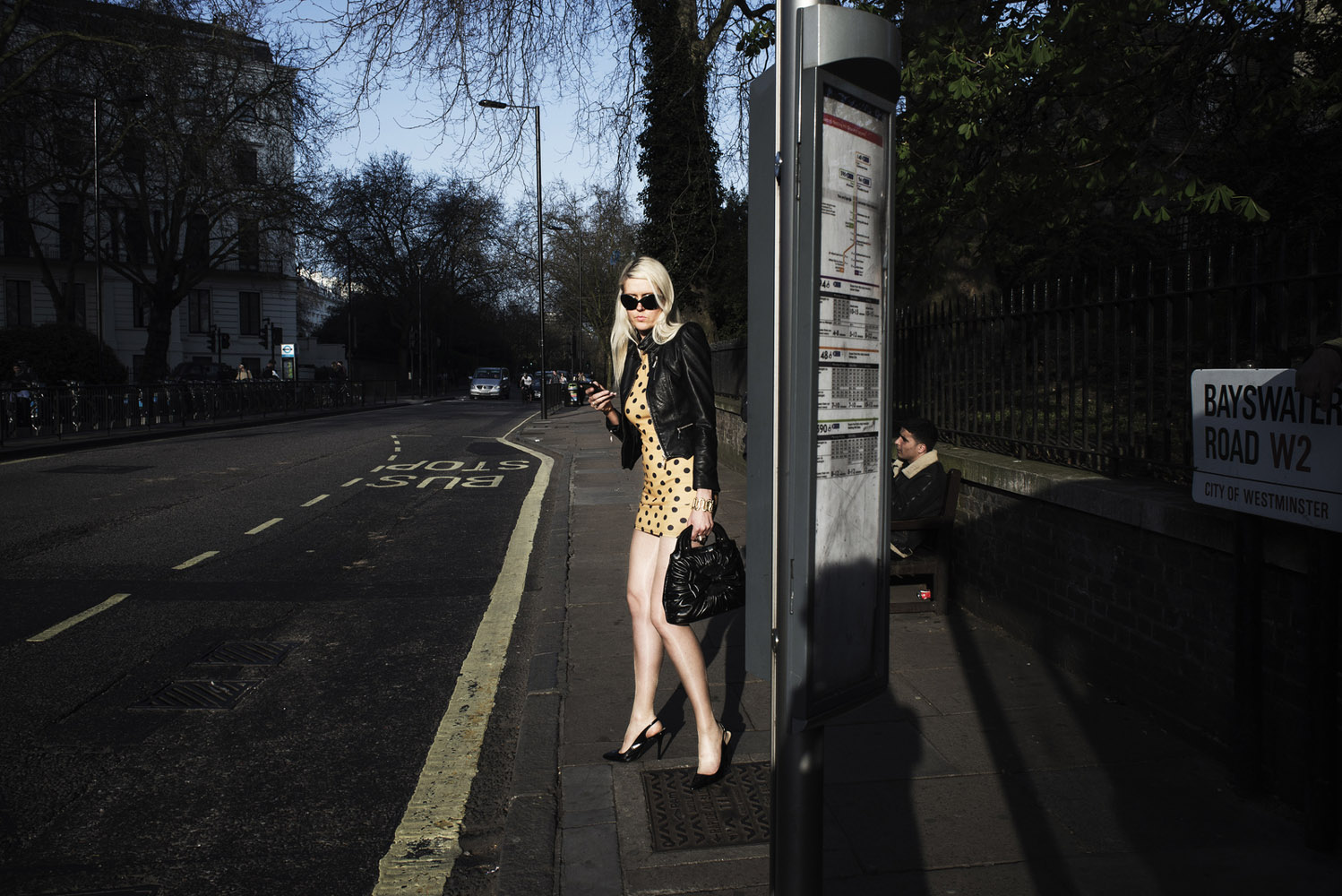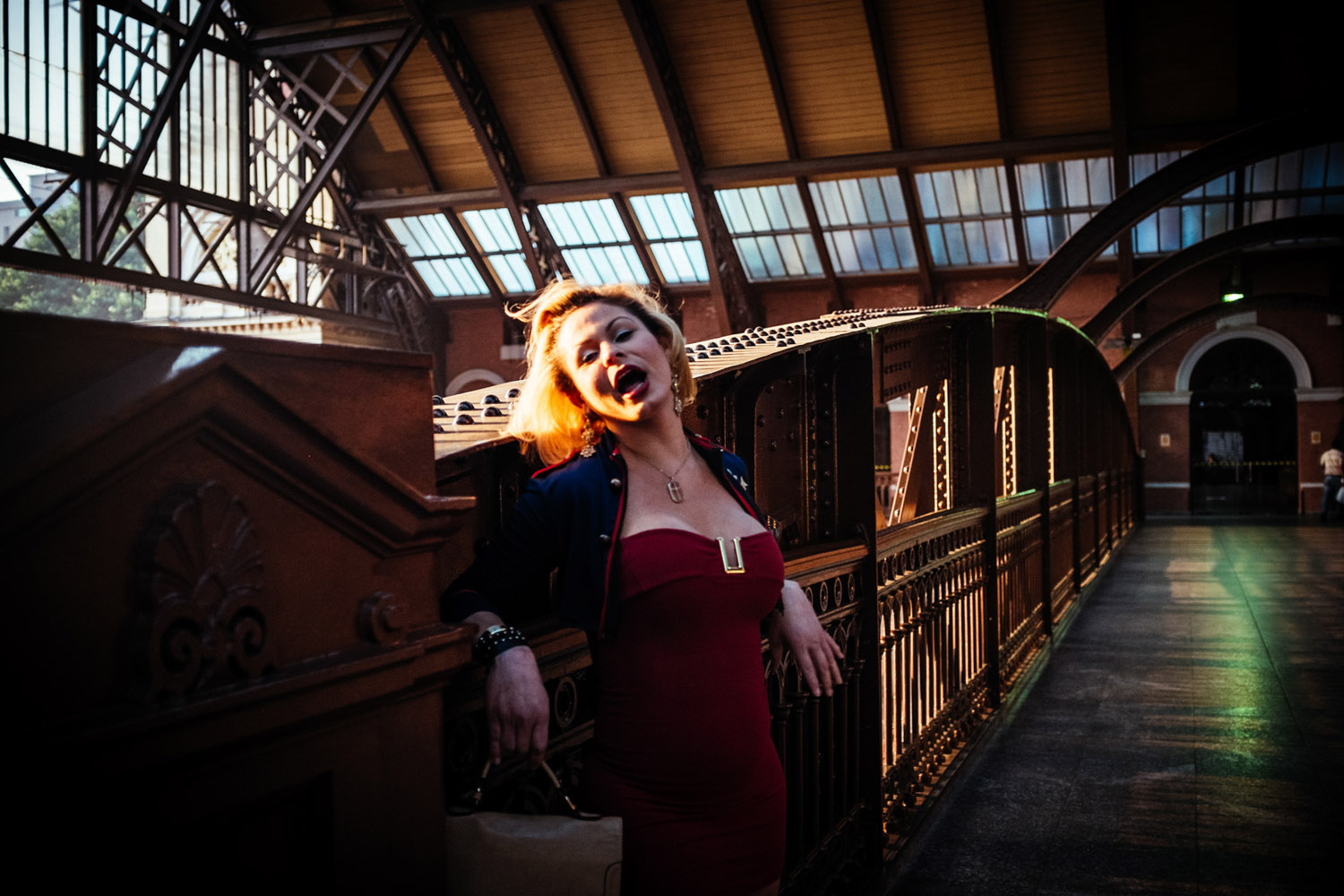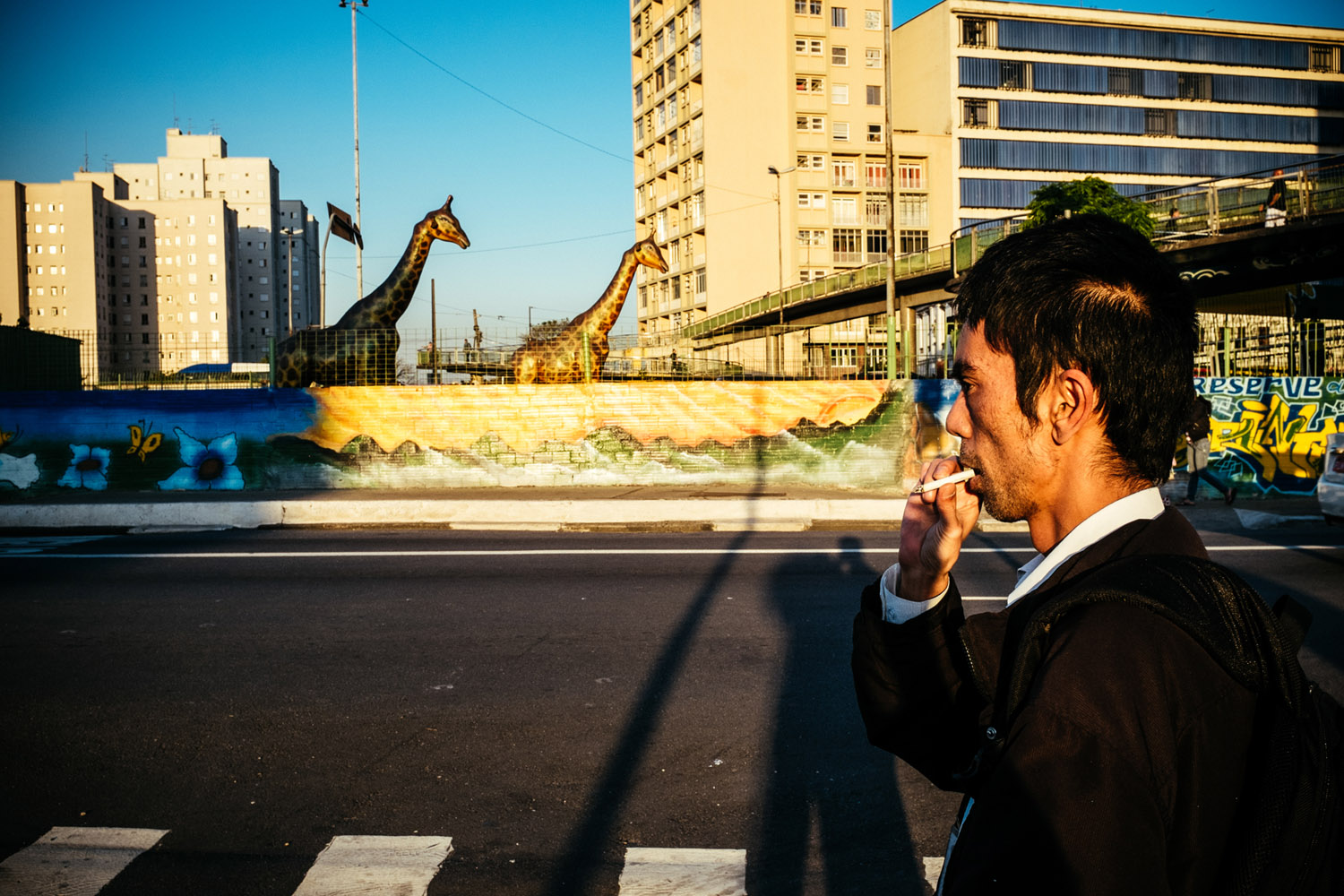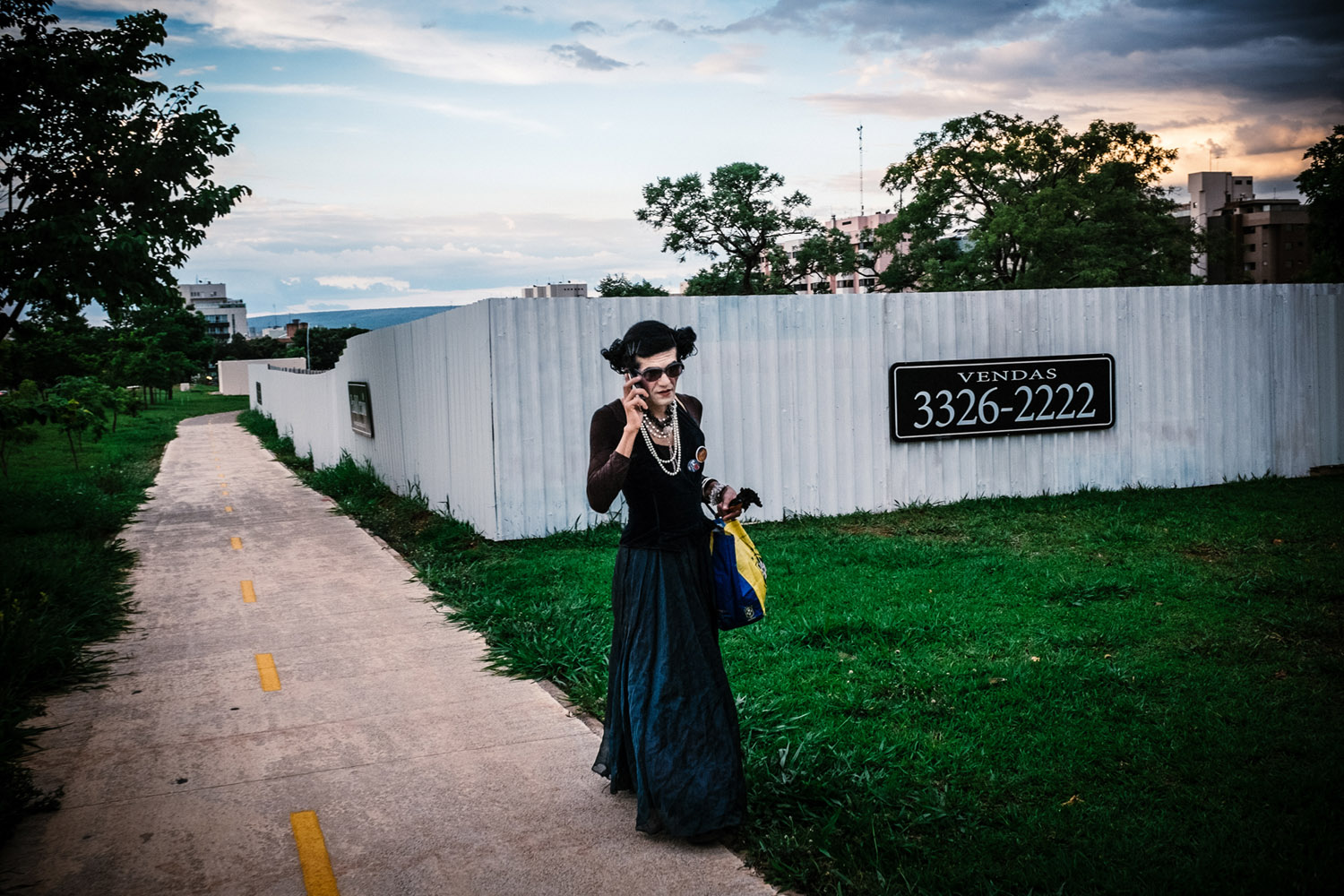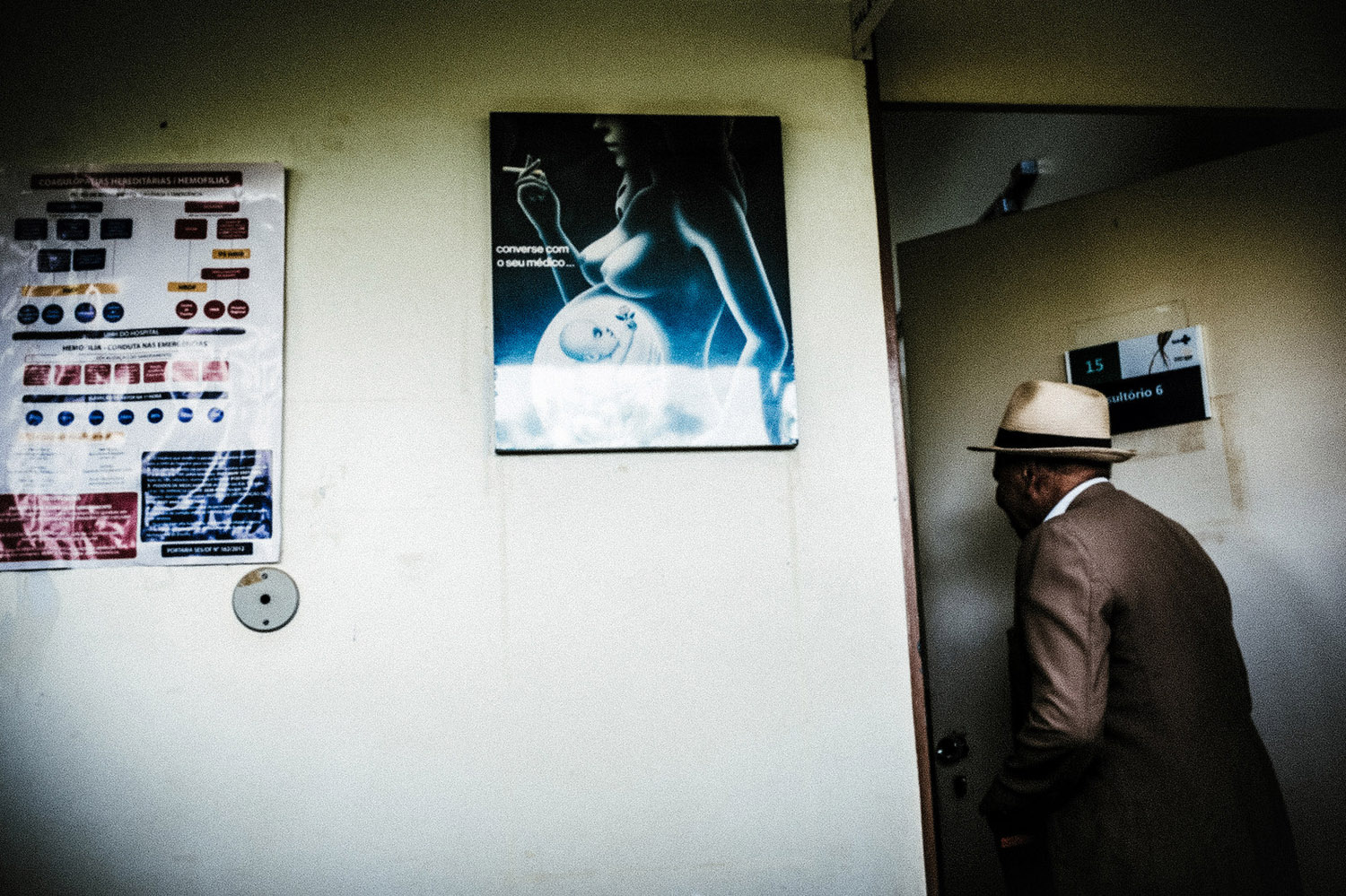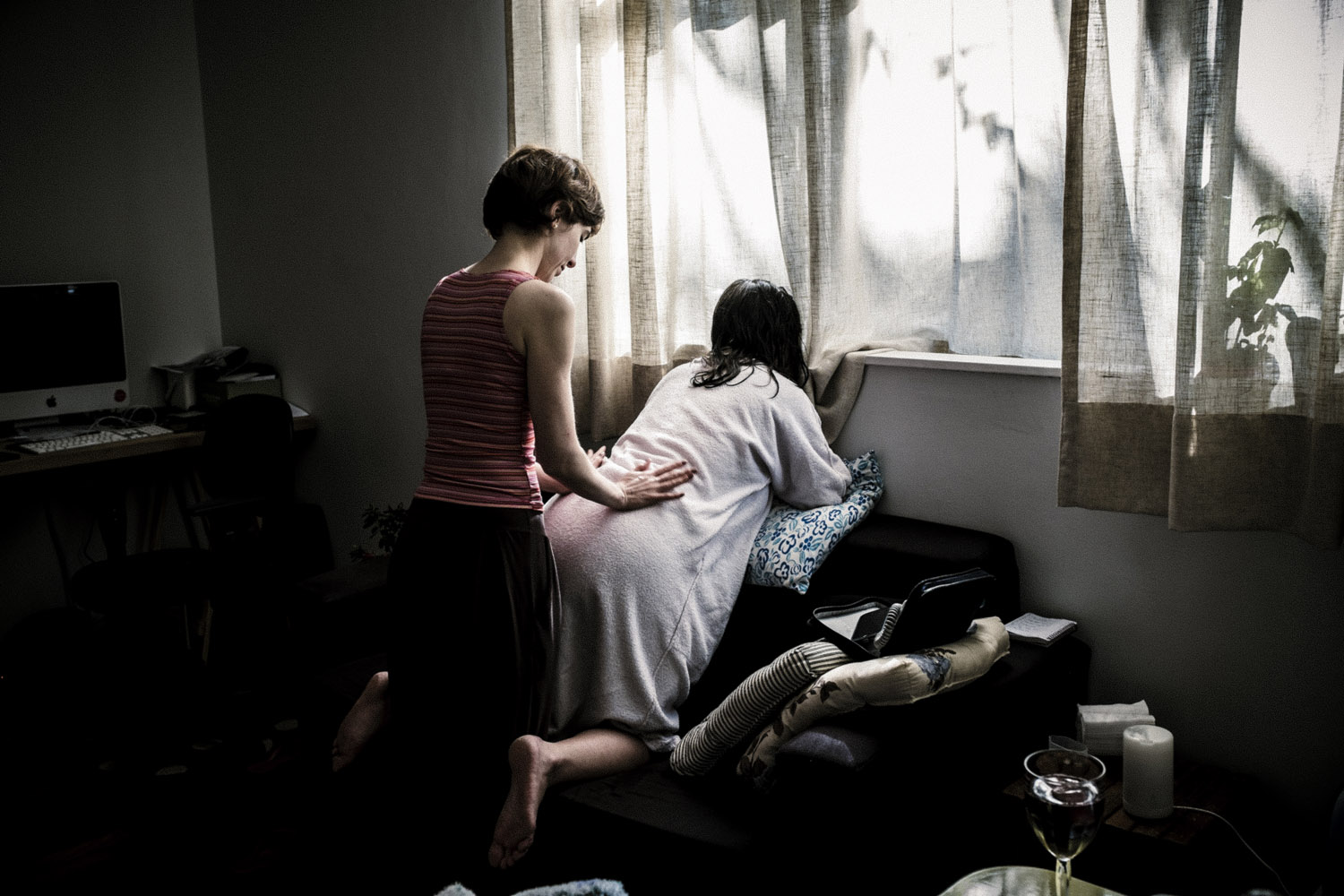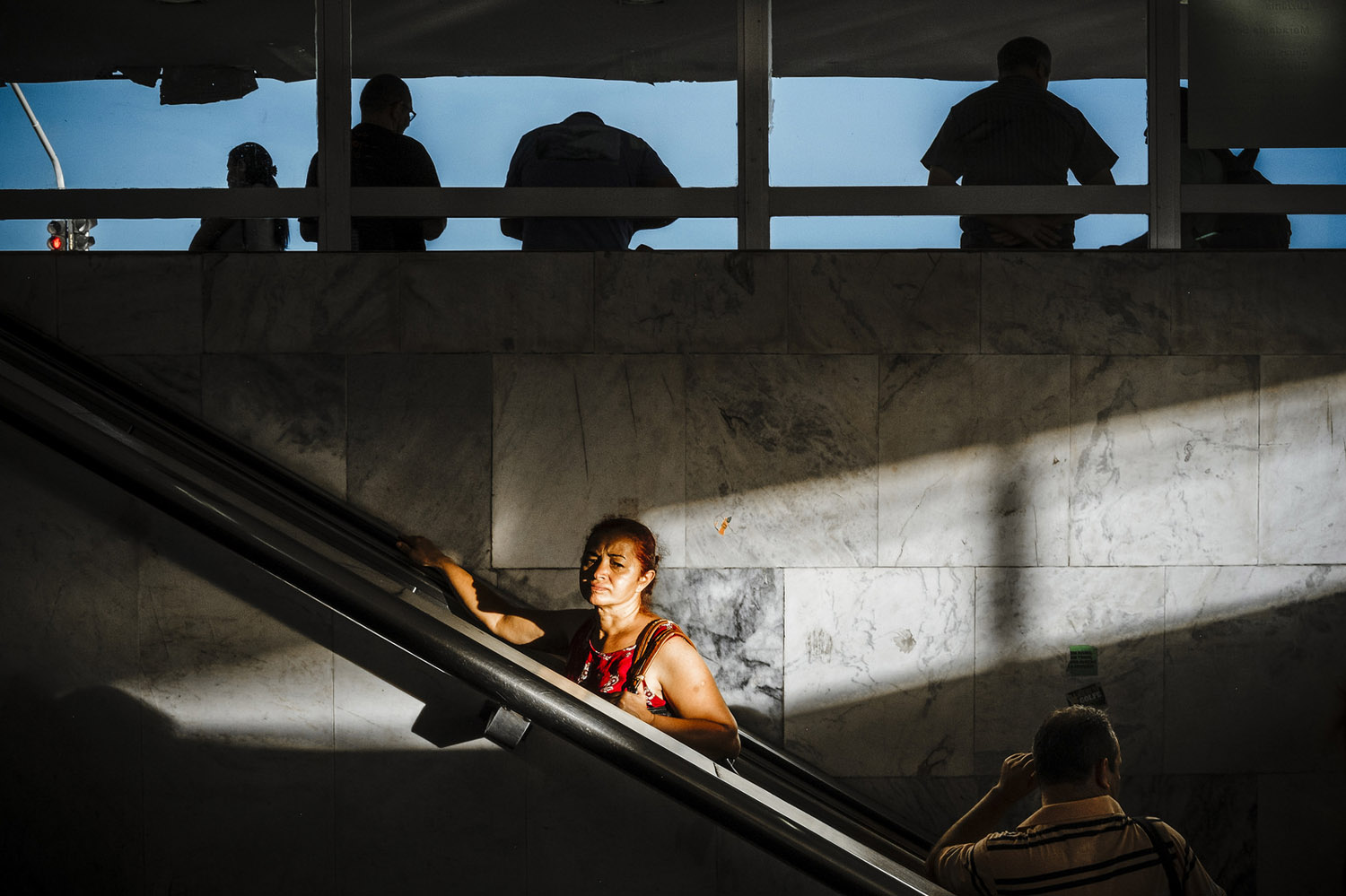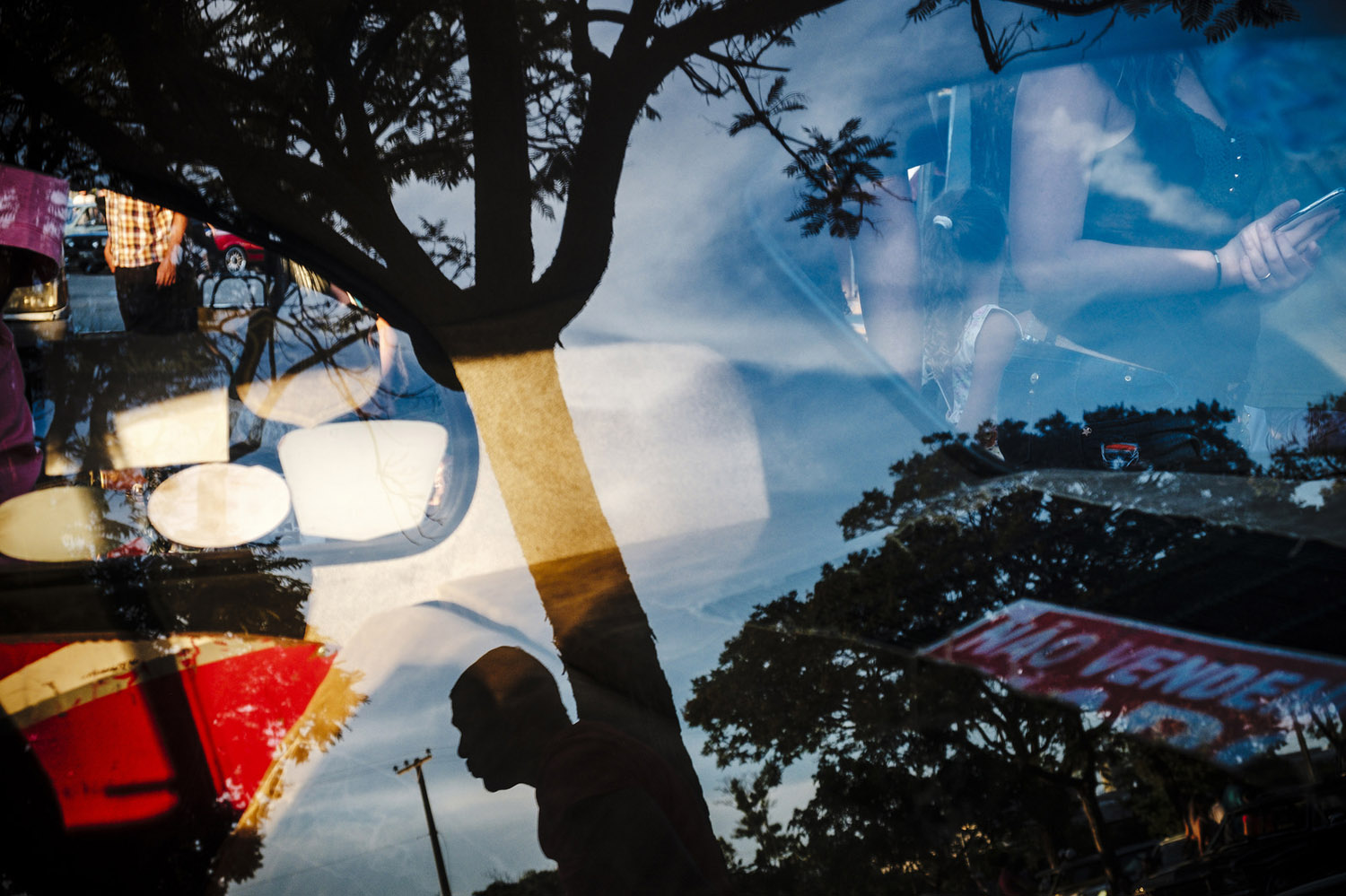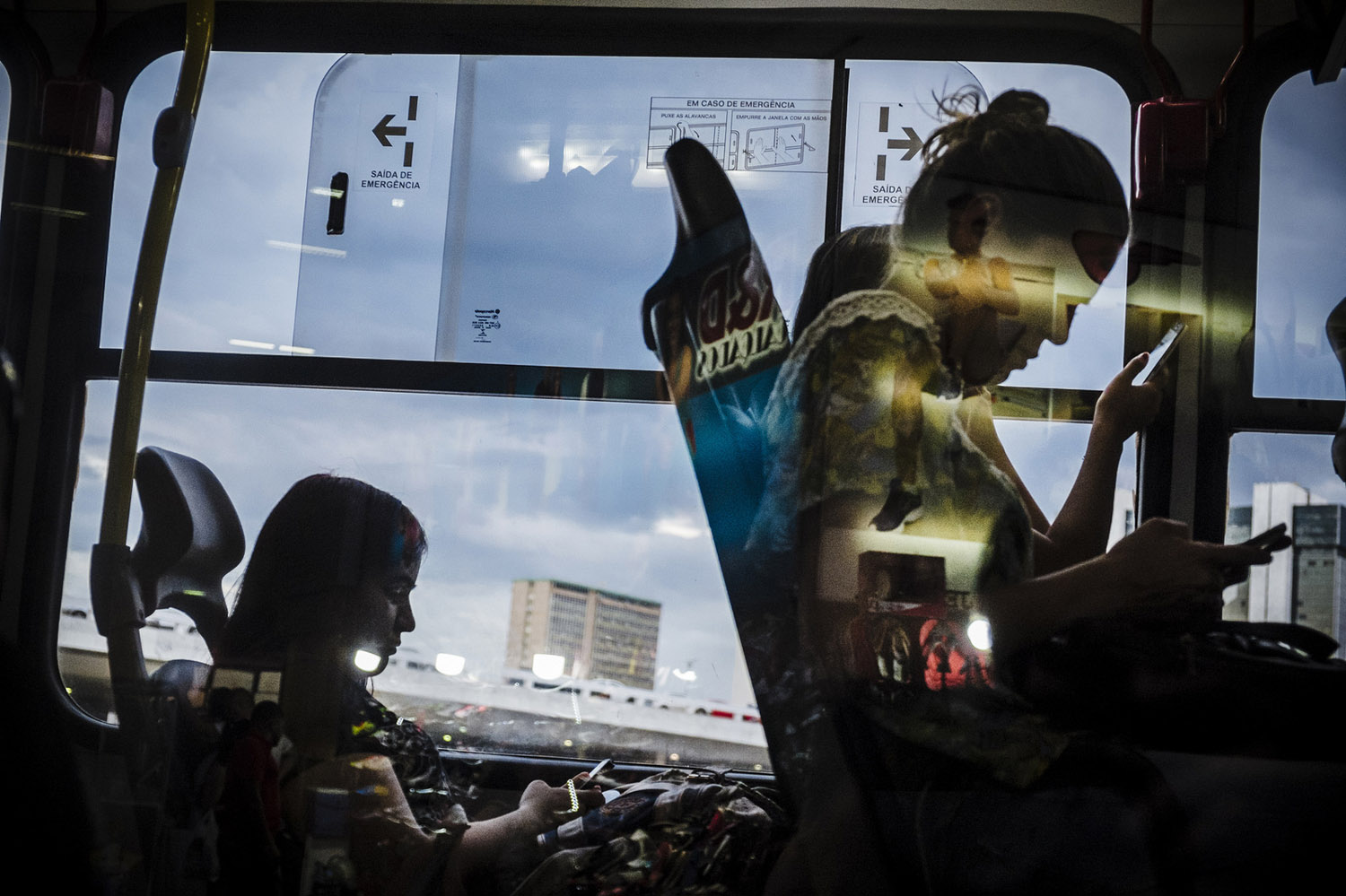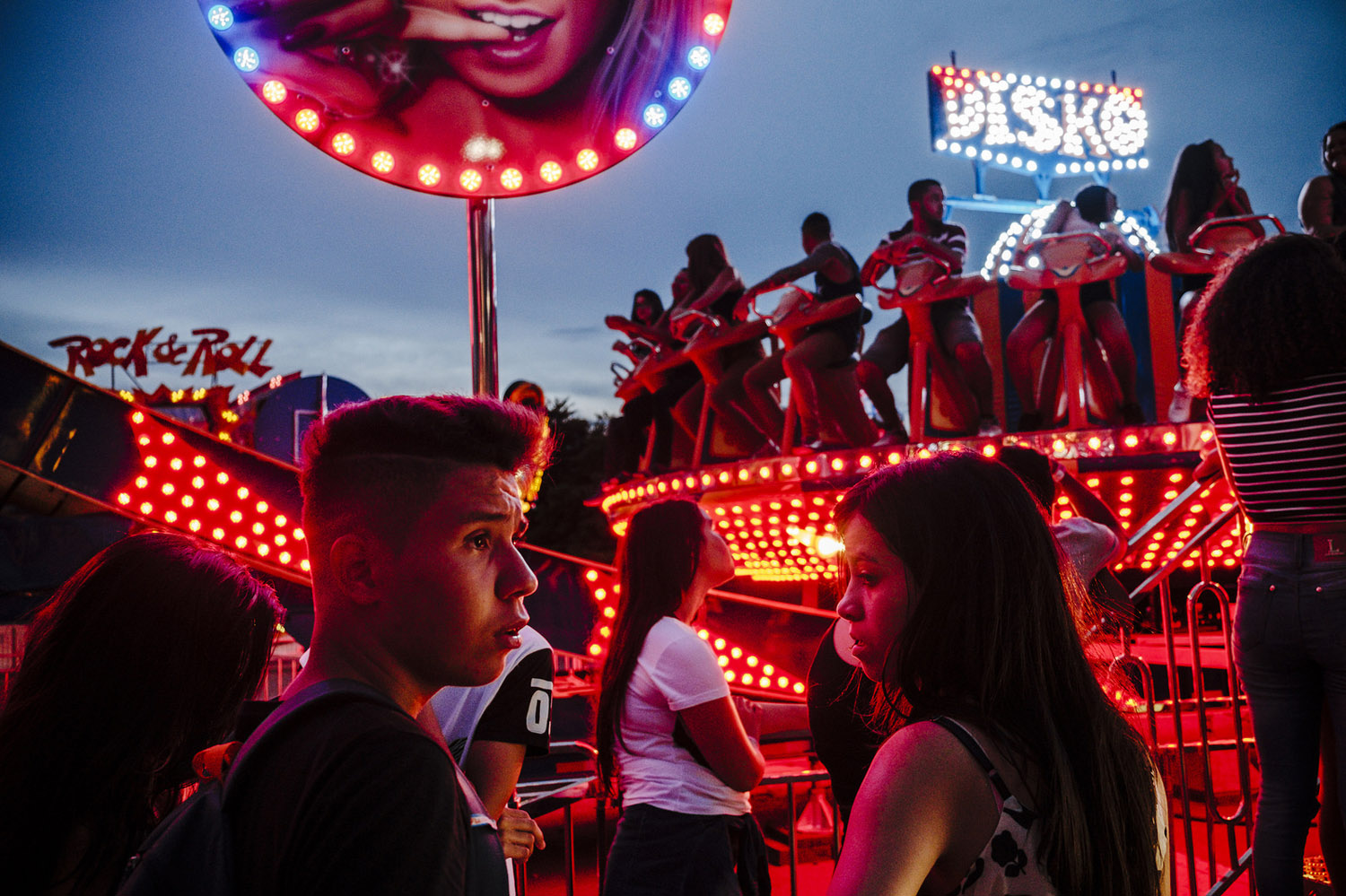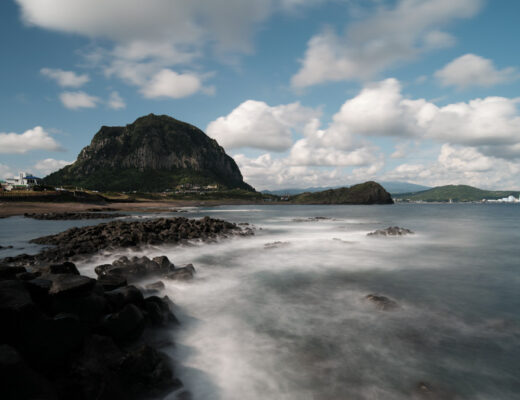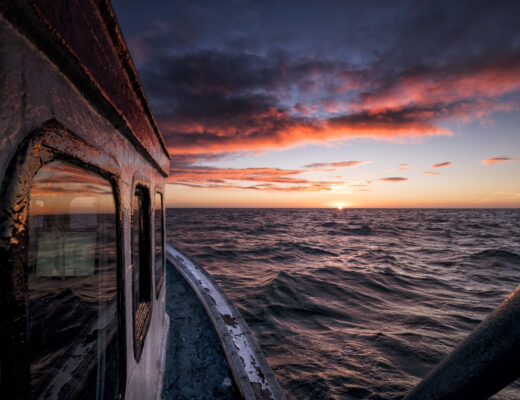My affair with Fuji X-Series started in 2014, when my DSLR broke and I borrowed an X100 from a friend for a couple of months. I was living in São Paulo, Brazil, then, about to change jobs and to move to Brasilia. It was a very sunny winter, light was great, and having free afternoons gave me the opportunity to fully explore the city I’d been living in for the past seven years – for the first time without the obstrusiveness of a big camera. Also, I loved the slide film look of Fuji files, something I’d always tried to emulate in my post production, since I’ve been greatly influenced by photographers who have used deep blacks in their photography, like Harry Gruyaert and Alex Webb.
My wanderings through São Paulo had started around 2009. I was working 10 hours per day as a writer in a daily newspaper, that was killing me. To fight boredom, I decided to try photography, which I’d enjoyed since my university years. I tried everything: long exposures, macro, portraits, even HDR… I was lost, but having fun. Then I thought it’d be nice to learn something else about this obsession, and I enrolled in a year-long course on photographic language under Carlos Moreira, a master who’s photographed São Paulo since the 60s. He has this huge fantastic library, and introduced me to Atget, Bresson, Kertész, Lee Friedlander, Garry Winogrand… but the color guys spoke louder to me, specially Gruyaert and his book Lumières Blanches. The way he’s worked with light, shadows, space and vibrant colors inspired me a lot.
I started waking up very early in the morning and walking with no destination in mind. I’d just have a coffee and leave my apartment searching for corners hit by sunlight. I didn’t look for any specific subject matter. I was just attracted by the effect of low sun light over urban colorful surfaces, by plays of shadow and light. Later, I start looking for characters to fill this scenario.
I loved the feeling of learning the city’s shortcuts and of doing something just for myself when everyone else was rushing to work. I got addicted to the feeling of having my mind free of thoughts and no preconceived ideas as I crossed the streets.
I took this habit to my small hometown whenever I visited my parents, and soon I had a series on the streets of the city I’d grown up in, called Limites.
This series got me a second place in a street photography contest in 2013, and I went to London to see my first exhibition. I had a whole week to photograph as much as I could, and luckily the British capital was sunny every single day – a miracle. I was starting to achieve what I expected from photography: taking me to places.
As years passed, I incorporated or absorbed other photographer’s influences into my work. Names such as Pinkhassov, Saul Leiter, Eggleston, Boris Savelev – photographers who, for me, were more interested in emotions/sensations suggested by color than in documenting the world around them objectively.
Though I was thrilled by getting good images, the experiences I collected by wandering the streets were even more rewarding. I went to places I’d never go to if not to photograph. Photography was a great excuse and companion in my journeys.
***
Now those days of São Paulo were about to end, but I still had some 20 days left.
Everyday, I’d go downtown and walked the streets surrounding Luz station, which is supposed to be a dangerous area, taken by drug addicts, dealers and prostitutes. Despite this, the small size of the X100 and its wide lens made me get closer than ever to people. Sometimes I’d be almost face to face with the characters, and they wouldn’t notice me, or wouldn’t care. It seemed that that tiny camera never felt threatening, and luckily I was never punched. That’s how I made these images:
I’d set zone focus at around 2-3 meters, keeping aperture between 5.6 and 8. The slight shutterlag of the X100 helped me to be more precise upon shooting, pushing me to choose my “decisive moment” more wisely.
A couple of months later I was living in Brasilia, and now I had my own Fuji X100S.
Brasilia can be very challenging for street photography. It was a planned city, built to be the country’s capital in the 50’s-60’s of last century. Its residential and business zones and the government buildings are very far away from each other, which results in empty streets and few spots with human activity enough to practice street photography.
Initially, the way I found to explore the city was riding my bike through the byke paths along North Wing, where I was living. I’d ride for kilometers without seeing anyone, just stopping when something would catch my eyes, like this stranger I met one day:
***
Soon my girlfriend got pregnant, and my Fuji was a perfect companion during the endless waits at public health centers. And I couldn’t help using it during the 20 hours labor we went through before Priscila gave birth to Violeta. We decided to have our daughter at home, with the help of a doula, and in the moments when I couldn’t help Priscila, I’d raise the camera to capture those moments. The quiet shutter helped me to do this unnoticed, and I’m glad I could capture that light emanating both from them and from our window.
I wasn’t totally happy about the limited field of view of the 23mm lens, so in 2016 I bought a used X-Pro1 with a 27mm. It was already 4 years old, but it soon became my first option on the streets. The combo was as compact as the X100s, but the 41mm focal range suited me best in Brasilia, where people are nearly always distant on the streets.
By this time, I’d found a goldmine in the central bus station. I’d always pass by it on my way to the satellite towns or to work, but it took me some time to realize that the station could be my final destination per se. It’s only 2km away from our National Congress, and its mess and chaos is an oasis of energy in the middle of the boring order of the civilian buildings. The place has gave me my latest project, which is still ongoing.
Soon I felt restless about shooting only in 41mm, so I bought myself a 18-55. This versatile lens came in handy as I started to experiment a lot with reflections. I love how it flattens perspective, bringing together elements that can be distant, helping me to create more complex and layered images and unusual relationships between distinct elements, turning reality into a visual fiction.
I switched to Fujifilm X-Pro2 in January this year, and for me the main upgrades were the reduction of the shutter lag and the the fastest recording of images to the card. I have mine set on manual focus most of the time. Also, I’ve been taking great advantage of its low light capabilities.
I try to keep my post processing as simple and quick as possible, so I can have more time to shoot. I’ve created some basic presets with my preferences, and I make fine adjustments to each image until they look how I want.
For me, street photography is a form of meditation and a huge part of my life. It’s about walking for hours and freeing your mind from everyday life until I kind of forget who I am. It’s about living the streets and enjoying the experiences you had because you decided to leave home with a camera, with nowhere to go.


